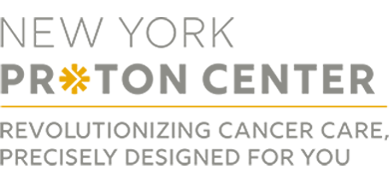One More Way NYPC is Addressing Non-Clinical Patient Needs
Cancer patients tackle a range of challenges beyond the immediate physical and medical aspects of their condition. A myriad of non-clinical needs can significantly impact well-being – in particular, financial burdens related to necessities such as housing, transportation, and groceries due to loss of income and increased out-of-pocket expenses.
Recognizing the importance of addressing these non-clinical needs, the New York Proton Center and the WiTT Group, Inc. recently joined forces to provide holistic support and revolutionize the way cancer patients handle various non-clinical challenges associated with their treatment.
WiTT has created a unique online Support Registry™ platform that allows patients to get the support they need by making it easy to ask for and receive help. The strategic partnership aims to leverage WiTT’s innovative solution to support our patients and help relieve financial burdens that accompany cancer treatment, while gathering data on the differences in non-clinical needs across patient populations.
NYPC aims to help relieve the financial burdens of patients. Costs related to non-clinical needs can cause stress and make the treatment process more difficult. WiTT’s platform allows patients to voice these challenges and express specific needs, such as money for groceries, gas, or transportation to treatment.
WiTT can also facilitate non-financial assistance: patients using the platform can ask for support such as a walk with a friend, picking up a child from school, dog walking, or accompaniment to an appointment.
It can be difficult to ask people individually for support – particularly when it comes to financial support – and bringing patients access to WiTT’s platform allows patients and caregivers to express their individual needs comfortably, while giving family and friends guidance on which types of contributions might be most helpful.
Since the adoption of the WiTT platform last year, NYPC has made remarkable strides in supporting our patients. Over $35,000 has been distributed to nearly 70 patients thus far, with housing, transportation, and groceries emerging as some of the top areas for support.
Latest Articles
New York Proton Center’s 2023 Year in Review
As we begin a new year, we want to take a moment to reflect on some of the highlights from an incredibly successful 2023 for NYPC. From leadership achievements to groundbreaking medical advancements and so much more, 2023 was a year of immense growth and impact.
NYPC celebrated some major institutional milestones last year. Not only did our Center mark its fourth anniversary since opening in the summer of 2019, but we also celebrated the treatment of our 4,000th patient in under four years – making us the fastest proton center in the world ever to reach that milestone. We are honored to have played a role in the health and well-being of so many lives and look forward to continuing our rapid growth and evolution as the only provider of proton therapy in New York State.
Leading the Way in Proton Therapy
We also celebrated some significant developments and achievements within our leadership team. It was an honor to welcome James Loos, CPA, as NYPC’s new Chief Financial Officer in July. James is a wonderful addition to the team – bringing over 25 years of experience in the healthcare and life sciences industry. His expertise has already proven invaluable to our Center.
Our leadership team also set some incredible new benchmarks in their respective fields. Dr. Isabelle Choi, NYPC’s Director of Research and Clinical Director, was elected a Fellow of the American College of Radiation Oncology (FACRO) – a highly prestigious recognition awarded to those who meet rigorous criteria of outstanding service to the College, the field of radiation oncology, and the patients they treat. Dr. Choi was one of just three radiation oncologists of the more than 5,300 practicing radiation oncologists in the United States who was elected for this distinction this year! Dr. Choi was also selected by Crain’s New York Business as one of this year’s 40 Under 40 honorees – a hugely well-deserved recognition that acknowledges her vast contributions to the field and her excellent patient care.
Meanwhile, Chief Medical Officer Dr. Charles B. Simone, II was named a Fellow of the American Society for Radiation Oncology (FASTRO) for his exceptional efforts in developing clinical trial strategies, leading innovative research and providing gold-standard patient care. Dr. Simone is one of the youngest in ASTRO’s history to be awarded this prestigious honor and one of only a handful of radiation oncologists in the world to have both FASTRO and FACRO distinctions. Congratulations to Dr. Choi and Dr. Simone on these tremendous achievements – we’re so proud to boast such an amazing team of leaders.
In June, we were thrilled to welcome New York State Health Commissioner James McDonald, who toured NYPC to learn more about our innovative research and the patient care we offer. It was an honor to be recognized for our efforts as an industry leader in the field of proton therapy.
Making Advances in Oncology Research
Our commitment to driving innovative treatments has continued to foster significant clinical progress. NYPC has remained a leader in providing 5-fraction proton SBRT, an extremely effective treatment modality that utilizes highly focused radiation beams to deliver a higher dose per treatment session over just five days. Five-fraction SBRT has been shown to achieve hugely promising results – particularly for prostate cancer patients, as the treatment’s ultra-specificity spares vital organs in close proximity to the prostate like the bladder, bowel, and rectum. We are proud to offer such a cutting-edge option to our patients and are committed to bringing increased awareness to this important treatment.
During 2023, NYPC also launched three new FLASH radiation therapy (FLASH RT) mouse model studies that will examine the use of FLASH RT to improve treatment of lung, pelvic and abdominal tumors. The studies are conducted with our partners at Memorial Sloan Kettering Cancer Center, Montefiore Medical Center and Mount Sinai Health System, in collaboration with NYPC’s Dr. Simone, who is the co-author of the first ever clinical trial on FLASH radiotherapy. FLASH enables ultra-high dose-rates with targeted precision, reducing treatment time and side effects – it is one of the most promising game-changers in oncology, and we’re proud to be leading the charge on advancing this crucial treatment option.
NYPC’s doctors also led major research efforts supporting the broader use of proton therapy treatment. Several NYPC physicians are leading large national clinical trials using proton therapy. NYPC has also been awarded research grant funding from the National Institutes of Health, as well as industry partners.
Committed to Proton Therapy Education
Our team also contributed to ASTRO revising its guidelines for proton beam therapy for the first time in more than half a decade – including the expansion of recommended uses for proton therapy. With the updated proton policy model, proton therapy has now emerged as a recommended standard of care for the adolescent/young adult (AYA) population, as well as a wider range of conditions, including head and neck, thoracic, abdominal, and pelvic tumors. This pivotal update signifies a major advancement in the effort to broaden access to proton therapy, ultimately improving the quality of care for a more extensive demographic of cancer patients.
Additionally, our team remained active participants giving invited educational lectures or presenting impactful research at numerous prominent conferences, including the 2023 Annual Meetings for ASTRO, ACRO, the Particle Therapy Co-Operative Group (PTCOG), the American Radium Society (ARS), the National Association for Proton Therapy (NAPT), and many more. Our physicians, physicists, and dosimetrists have presented research talks, lectures, panel discussions, and educational sessions on a wide variety of topics, demonstrating our continued dedication to sharing knowledge and working with our colleagues in the proton therapy field to advance the understanding and awareness of this advanced treatment.
Our commitment to education persisted as we continued to train radiation oncologists, physicists, and dosimetrists from around the world. In 2023, we proudly extended our expertise to the faculty and staff for multiple sites of new proton centers in North America, Europe, and Asia, contributing to the growth and development of the field.
We also demonstrated our commitment to being an active and caring member of our neighborhood through close engagement with the East Harlem community through activities such as a toiletry and spa product drive with WIN NYC– an organization which provides safe housing and critical services to homeless women and children in New York City–as well as our participation in local events like the Boriken Neighborhood Health Fair and Uptown Grand Central’s Party On Park. In addition, several NYPC leaders are actively involved with a Downtown Revitalization Initiative (DRI) grant that will support transformation of East Harlem into a transit hub and gateway to the historic El Barrio. It will also provide resources needed to create more green and functional public spaces, and support business and job growth in the neighborhood. As an anchor of the 125th Street Development project, NYPC was one of eight Applicant Partners supporting the grant application for the DRI initiative.
As we look back on 2023, we express our deepest gratitude to our patients, staff, and the community for their unwavering support. Together, we have achieved remarkable milestones, and we eagerly anticipate the triumphs that 2024 will bring. Here’s to another year of excellence, innovation, and compassionate care!




